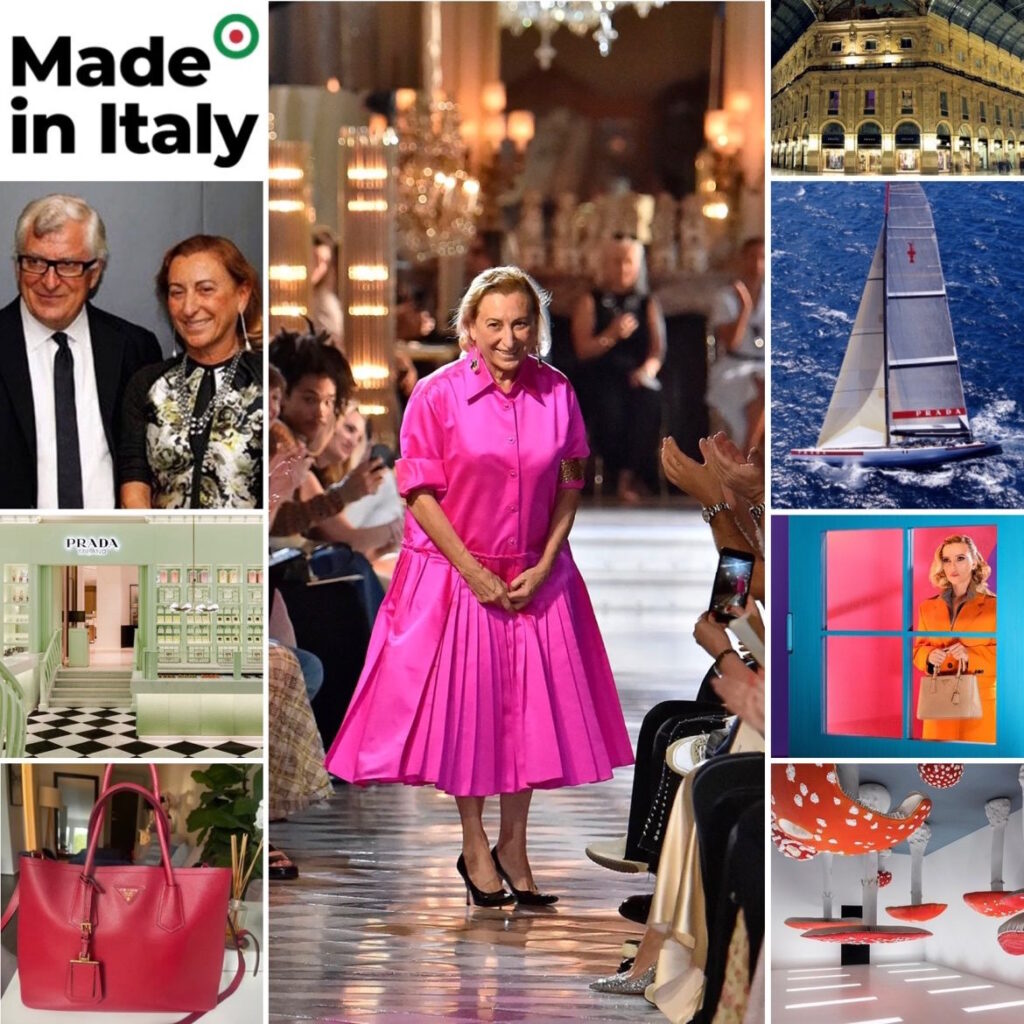
A hundred and ten years of success, a brand synonymous with exclusivity and elegance, a story that begins in the heart of Milan but conquers the world… We are talking about Prada, a 100% Made in Italy style icon and a reference point in the fashion world.
Its history began in 1913, when the brothers Martino and Mario Prada opened the Fratelli Prada Boutique in Galleria Vittorio Emanuele in the centre of Milan, an exclusive leather accessories shop that also featured exotic and uncommon leathers, such as elephant, snake or crocodile.
The evolution of a brand
The target audience is the city’s upper middle class and, in any case, the wealthier classes. The quality of the products was soon universally recognised, and the company became a supplier to the Royal House, as well as an exclusive fashion icon in Italy and abroad.
Like many other companies, however, Prada suffered the crisis of the inter-war period. It had to close its second Milanese shop in Via Manzoni and, therefore, decided to address a broader and more popular target group. After Mario’s death, his daughter Luisa joined the company, but it was her granddaughter Maria Bianchi, known as Miuccia, who brought the brand back to success.


Miuccia’s revolution
Born in 1949, a graduate with a degree in Political Science, human rights activist and convinced feminist, she married manager Patrizio Bertelli, owner of the company ‘I pellettieri d’Italia‘. This brand would later become part of the Prada brand. In 1974, Miuccia created a series of bags in ‘sail fabric’, a type of nylon whose production requires special looms with twisted weaves. But it was in 1985 that the iconic black backpack made from the same fabric was launched on the market. Although minimal and austere, it would become a must-have for the following decade.


In 1993, it was the turn of the Miu Miu brand, deliberately far from the traditional standards and aimed at a young audience to whom the designer proposed experimental and modern designs, an absolute novelty in the fashion world.
Fondazione Prada
Fondazione Prada was established in the same year and is dedicated to supporting contemporary art, film, photography and other art forms. The foundation is based in Milan and Venice and has organised solo exhibitions of internationally renowned contemporary artists such as Anish Kapoor (1995), Louise Bourgeois (1997), Sam Taylor-Wood, Steve McQueen (2005), Tom Sachs (2006) and others. The Foundation also promotes film festivals such as the Tribeca Film Festival at the Fondazione Prada (2004) and multidisciplinary and philosophical conferences and events related to architecture and design.
Acquisitions and growth
But the novelties do not end there, and the brand’s growth seems unstoppable. After launching the Prada Uomo and Prada Sport collections, it is the turn of acquisitions. By now a fashion giant, in 1999, it became the majority shareholder of Church’s, the historic English handmade shoe brand, and in 2006, it completed its acquisition. In 2001, the holding acquired the company Genny, whose production chain would be employed for Prada lines while the brand would later be sold. In 2010, it was the turn of Alberto Moretti’s Car Shoe brand, and in 2011, the company went public.
Prada Today
Today, Prada Group S.p.A. is a holding company headed by top manager Andrea Guerra. Headquartered in Milan, it has 24 plants, 13,000 employees worldwide and a turnover of more than 4 billion euros in 2022. Prada’s adventure in the sailing world began in 1997 with Luna Rossa, a project that, over the years, has won the hearts of Italians and written the history of Italian sailing. The 37th America’s Cup, to be held in 2024, will see the sixth participation of Luna Rossa, which has won the right to challenge the Cup holder in two editions by winning the Challenger Selection Series.


Finally, since 2019, Prada has joined the international Fur Free Alliance programme, which gives up the use of fur in the garments created.
Congratulations to those who, going beyond standards, bring Italian style to the world!
Learn about other companies that have made the history of Made in Italy.






